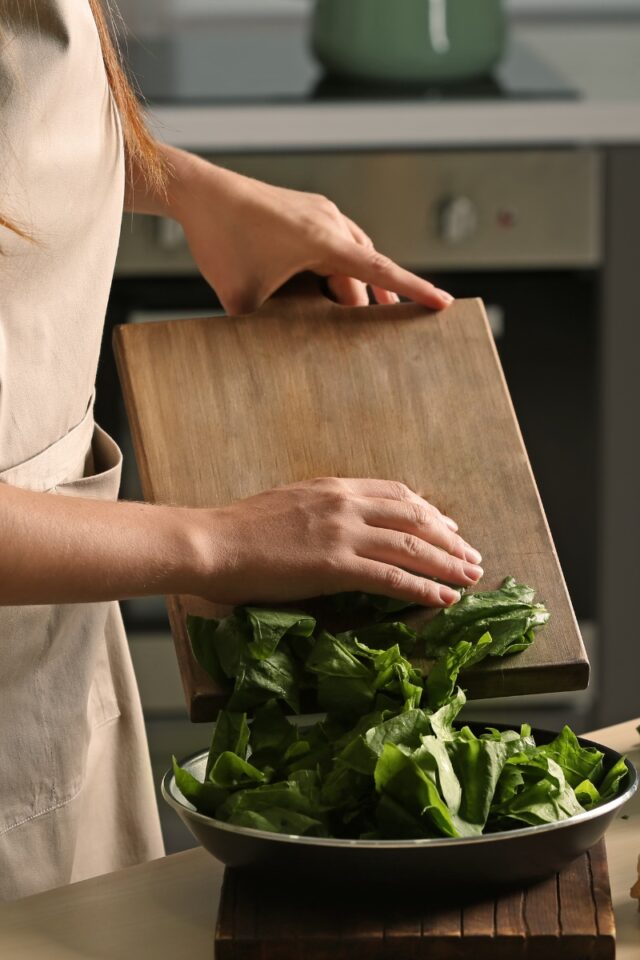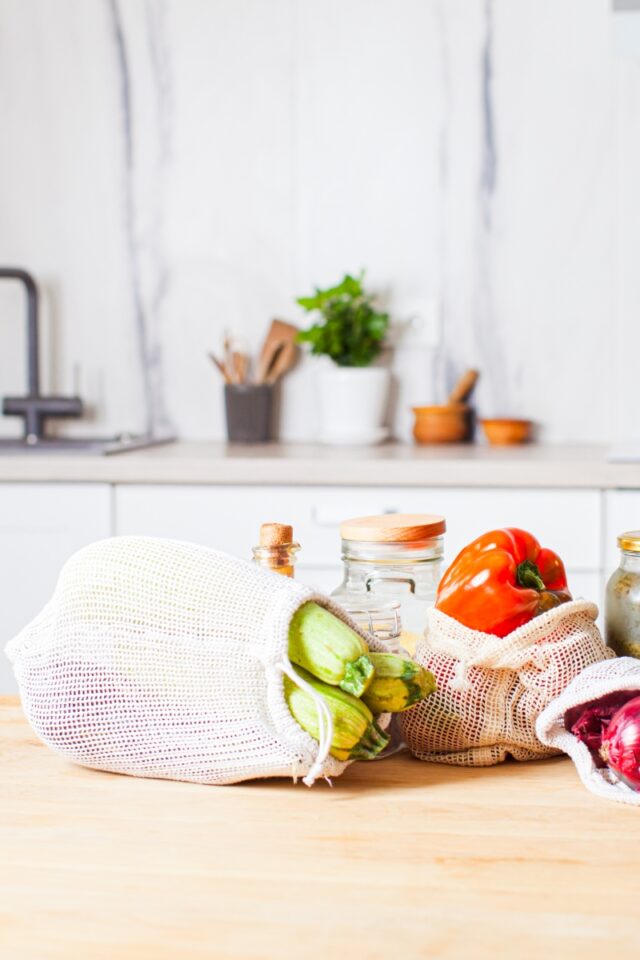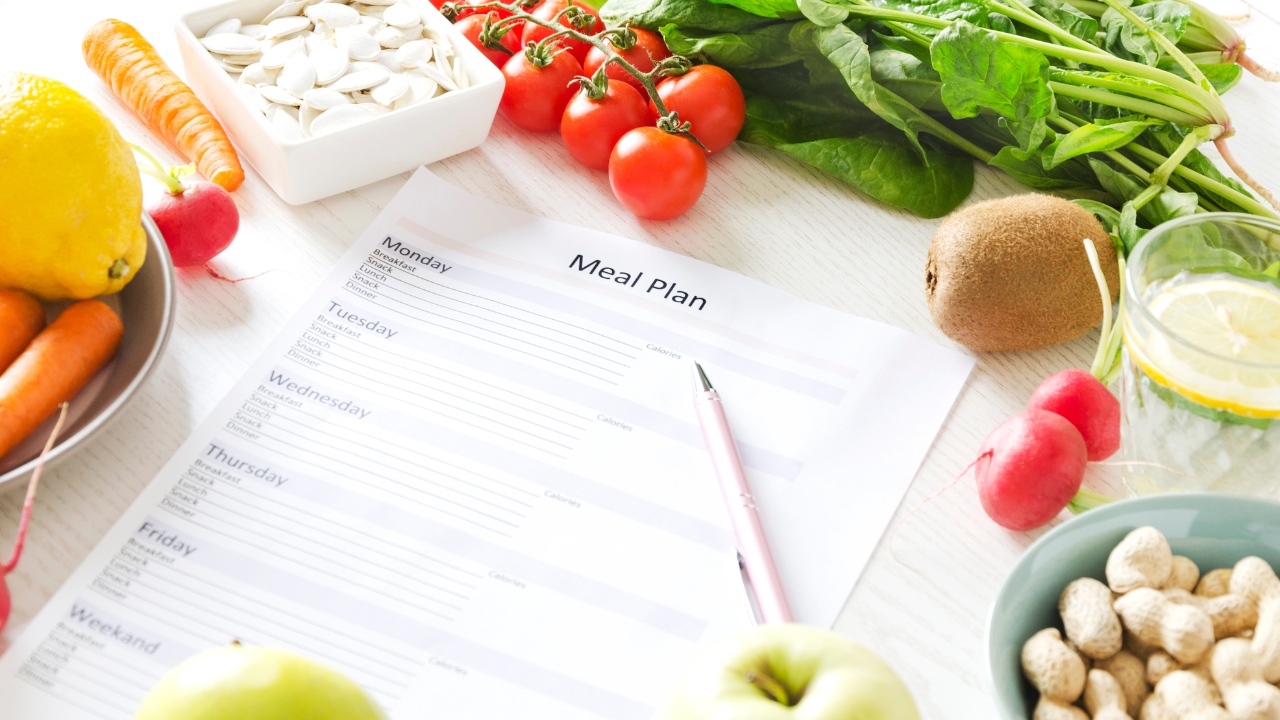Preparing family dinners when everyone at the table has different dietary preferences can feel like solving a complex puzzle each evening. For parents navigating this maze, the challenge isn’t just about whipping up meals—it’s about ensuring each dish brings joy, nourishment, and a sense of togetherness. Whether you’re fully plant-based or simply incorporating more veg-friendly meals into your family’s diet, the goal is clear: food should unite, not divide.
My solution to this daily dilemma? Ta da: the meal plan template. This simple yet powerful tool is designed to help you map out a week of dinners that everyone will look forward to—without the stress. It has become my favorite dinner planning tool and is a resource I recommend that everyone use for their weekly planning (mixed dietary preferences in your household or not). Simply plug recipes into your weekly template for a dinner plan that eliminates the need to ask the question, “What’s for dinner?”
Join me as I guide you through the process of using this meal plan template to craft a week of delicious, inclusive meals. Whether you’re juggling the tastes of vegans, vegetarians, and meat-eaters alike, I’ll show you how to plan efficiently and effectively.
A Word About Mixed-Dietary Preferences
Navigating a family’s dietary landscape requires more than just an understanding of nutritional basics; it demands sensitivity, respect, and a commitment to inclusivity. Each person’s dietary choice—whether due to ethical beliefs, health reasons, or personal preference—is deeply personal and deserves equal consideration at the dinner table.
Open Communication is Key
Start with open, non-judgmental conversations about food preferences and dietary restrictions with every family member. These discussions can help clarify what everyone enjoys and can tolerate, making it easier to find common ground. A shared understanding will not only prevent potential conflicts but also ensure that everyone feels heard and valued.
Respecting Choices
It’s important to respect and honor these choices without imposing one’s dietary preferences on others. This respect fosters a supportive environment at home, where food becomes a means of connection, rather than a point of contention.
Building a Flexible Menu
With a clear picture of each family member’s needs and preferences, you can begin to craft meals that are as inclusive as they are delicious. This approach not only accommodates all dietary preferences but also introduces an element of variety and excitement to your family meals, ensuring that everyone looks forward to time spent together around the dinner table.

Take the Thinking Out of What to Cook
Meal planning can often feel overwhelming, especially when you’re trying to accommodate various dietary needs. I struggled with this for years until I discovered specific meal ideas that I could adapt to serve everyone with the same meal. This is where a meal plan template becomes invaluable. It not only simplifies the planning process but ensures that every meal is a winner because it includes dinners you know your family loves and caters to everyone’s needs. These are just a few of my favorite things when it comes to integrating a meal plan template into my weekly dinner routine:
Streamlined Decision Making
One of the biggest advantages of using a meal plan template is the reduction in dinner decision fatigue. By dedicating time to plan your meals once a week, you eliminate the daily stress of deciding what to cook. Before using a template, I would cringe every time one of my kids asked, “Mom, what’s for dinner?” Now, I just refer them to the template where the whole week is mapped out for the whole family to see. Another plus is being able to organize your grocery shopping more efficiently and ensure that you have all the necessary ingredients when you need them. (No more last minute — or daily runs —- to the grocery store!)
Variety and Balance
A meal plan template helps in maintaining nutritional and culinary balance throughout the week. I like variety in what I cook and eat so being able to see all of my dinners at a glance guarantees that I’m not loading up on too many Asian nights in a week (one of my family’s favorite meal ideas), while also making sure I leave room for leftovers or an easy pizza night.
This balanced approach is especially helpful when nurturing a family that includes both vegans and non-vegans. Each meal can be planned to offer something for everyone, keeping the core principles of plant-based nutrition in play while also including optional animal-based proteins.
Flexibility and Predictability
While a meal plan provides structure, it also offers flexibility. Templates are designed to be adaptable. You can easily move meal ideas to different days of the week, or rotate them into a different week during the month while retaining the meals in your overall plan. At the same, the predictability of knowing that Tuesday is “taco night”, for example, can provide a sense of excitement and anticipation for dinner that everyone looks forward to. (I know my family would revolt if Taco Tuesday was dropped from our weekly meal plan template!)
Waste Reduction
Meal planning is not just about saving time and money; it’s also about sustainability. By knowing exactly what and how much to cook, you can significantly reduce food waste. This not only benefits your budget but also the planet, (one of the many reasons I adopted a plant-based lifestyle).

How To Set Up A Meal Plan Template
Creating a meal plan template that works for your family is about more than just filling in a calendar. It’s about designing a flexible system that captures your family’s favorite meals — and introduces new flavors, as well as accommodates varying tastes and dietary needs while keeping meal preparation simple and stress-free. Here’s how you can set up your meal plan template to make your weekly planning effective and efficient:
Step 1: Choose Your Format
First, decide on the format that best suits your planning style—whether digital (like a spreadsheet or app) or traditional (like a printed calendar or board). Digital templates, created in Google Docs or Canva, can be easily adjusted and shared among family members, while physical templates may be more visually engaging for gathering input from the family and displaying in the kitchen for reference during the week.
Step 2: Break Down the Components
Divide your template into daily slots, and within each day, outline the dinner specifics:
- Meal Ideas: Decide on the type of dinner or theme. Choose meals that are proven favorites at your table and that are plant-based (built around a plant-core main that can be supplemented by adding animal protein or dairy for non-vegans). Spaghetti or pasta, burgers, and tacos are some common family go-to ideas. Additionally, include new cuisine types or ingredients that you want your family to try or would like to add to your family’s diet. Main dinner salads, soups and Indian curries are some examples from my family.
- Protein Sources: List plant-based proteins and optional non-vegan proteins to ensure there is variety throughout the week. No vegan wants to eat tofu three nights in a row, while non-vegans will tire of chicken every night of the week.
- Recurring Patterns: Block out specific days of the week when you know you’ll be eating out or prefer not to cook. For example, if it’s date night every Saturday for you and your partner, you’ll know you’ll need to plan a simple meal for the kids to enjoy with the babysitter while you dine out. Other factors could include a day for leftovers the day before you typically hit the grocery store, or a portable meal for your daughter’s game days.
Step 3: Implement a Rotation System
To keep meals diverse and engaging, implement a rotation system. This involves cycling through different cuisines (Italian, Mexican, Asian, etc.), types of dishes (stews, salads, stir-fries, etc.), and protein options. This not only introduces variety but also helps in discovering new favorites that please all family members. You can set this up by designating certain days of the week and alternating them among the specific weeks in the month.
My family’s template includes 8-10 different meal ideas or cuisines that I assign to different days in the week, and distribute evenly among the month so I can rotate the same recipes if I like while still keeping the menu fresh and different.
Step 4: Include Flexible Elements
Ensure that your meal plan has flexible elements that can be easily swapped. This might mean having a couple of backup options readily available for days when the planned meal isn’t feasible, or when you’re too tired to cook. Some of my go-to options in this category are stuffed chili potatoes (always keep cans of chili in the pantry) and pasta and meatballs (I’ve always got what I need in the pantry, as well as a bag of plant-based and regular meatballs in the freezer). Flexibility is key to being able to put your meal plan template to use without stress.
Step 5: Involve Your Family
Get input from your family members when filling out the template. I keep a Family Favorites list on my iPhone organized by the meal idea categories in my meal plan template. I add specific recipes or meals for each category as I introduce them to my family. If it’s a dinner winner, it goes on the list. Then, every week when I go to plan my meals, I pull out my meal plan template and select a recipe from the list to plug into the designated category.
Pro tip: Keep a list of 4-5 recipes or meals per category in your meal plan template so that you’re never serving the same meal more than once a month.
Getting your family’s input ensures the meals will be enjoyed by all while also making everyone feel included and respected in their dietary choices and preferences. It also takes all of the responsibility off of your shoulders and empowers the whole family to be part of the dinner decision making process. I like to set time aside on Thursday nights before I set up my plan for the week to ask for special requests or ideas for the upcoming week.

A Sample Week Using the Meal Plan Template
To illustrate how to use the meal plan template effectively, I’ve outlined a sample week with the dinner idea from the meal plan template highlighted at the top of each day. From there, I’ve selected a recipe, options to customize it for non-vegans and simple vegan sides to round out the meal.
Monday:
- Meal Idea: Pasta night
- Recipe: Lentil bolognese served over whole wheat pasta
- Non-Vegan Protein Option: Meatballs
- Vegan Sides: Garlic bread and DIY salad bar
Tuesday:
- Meal Idea: Build-Your-Own Taco Night
- Recipe: Beans and greens tacos
- Non-Vegan Protein Option: Seasoned ground beef
- Vegan Sides: Guacamole, salsa, rice
Wednesday:
- Meal Idea: Soup or Stew
- Recipe: Bean chili
- Non-Vegan Protein Option: Cooked ground turkey
- Vegan Sides: Mixed greens salad and cornbread
Thursday:
- Meal Idea: Lettuce Wraps
- Recipe: Cauliflower & Tofu Fried Rice Lettuce Wraps
- Non-Vegan Protein Option: Cooked ground chicken
- Vegan Sides: Mixed greens salad and cornbread
Friday:
- Meal Idea: Leftover Makeover (Double the amount of chili on Wednesday for dinner tonight)
- Recipe: Stuffed chili potatoes with various toppings
- Vegan Sides: Butter lettuce salad with avocado
Saturday:
- Meal Idea: Pizza night
- Recipe: Homemade pizza with various toppings
- Non-Vegan Protein Option: Pepperoni and mozzarella
- Vegan Sides: Vegan Caesar Salad
Sunday:
- Dine in or take out
Keep track of the most popular themes and dishes, and consider revisiting them with slight variations to keep things interesting.

Tips for Shopping and Prepping Meals
Once you have your meal plan template filled out, it’s time to shop and prep! Here are some tips to help streamline these processes, ensuring that you spend less time in the kitchen and more time enjoying meals with your family.
Organized Shopping Lists
- Categorize Your List: Organize your grocery list by the layout of the store (produce, dairy, pantry items, etc.) to save time and prevent backtracking in the store. This also helps ensure you don’t forget any ingredients.
- Check the Pantry First: Before heading to the store, check your pantry, freezer and fridge so you don’t stock up on anything you already have (and also use up items close to their expiration date).
- Plan for Bulk Purchases: Consider which items can be bought in bulk, such as rice, pasta, or canned goods to save money and reduce shopping frequency.
Meal Prepping Strategies
- Batch Cooking: Prepare components like grains, beans, and proteins in bulk on the weekend before the week you’re implementing your meal plan template. Fillings for tacos, salad dressings and casseroles are also great examples of items you can prep ahead to streamline dinner during the week. Store these in the fridge or freezer to use as needed, cutting down daily cooking time.
- Pre-Cut Vegetables: Wash and cut vegetables ahead of time. Store them in clear containers in the fridge to keep them fresh and visible, making them easy to grab when cooking.
- Use Multipurpose Ingredients: Opt for ingredients that can be used in multiple recipes throughout the week. For example, roasted vegetables can be a side one night, a salad topping another, and blended into soup on another.
Efficient Cooking Methods
- One-Pot/Skillet Meals: These cooking methods reduce cleaning time and can be a great way to combine several meal components into one dish. Non-vegan proteins can easily be prepared and served on the side.
- Slow Cooker/Pressure Cooker: Utilize appliances like slow cookers or pressure cookers to prepare meals with minimal supervision and energy use.
- Cook Once, Eat Twice: Plan for meals that can easily be turned into something else the following day. For example, a big batch of chili can be served over baked potatoes the next night.
Put It Into Action
By using a meal plan template, you’ll streamline your planning process, embrace flexibility, and cater to diverse dietary needs without added stress. I know first-hand how easy this tool makes creating weekly dinner plans to satisfy both me and my non-vegan family.
By making meal planning a central part of your family’s routine, you not only ensure that everyone’s dietary needs are met, but you also create opportunities for connection, creativity, and joy around the dinner table. Remember, the goal of meal planning isn’t just about feeding your family; it’s about nourishing relationships and building lasting memories together.
A meal plan is your roadmap to dinner freedom. With that in mind, take care to use it to liberate, not restrict you in your planning. It’s a tool that should evolve with your family’s tastes and needs. I encourage you to experiment with new recipes, tweak your meal plan template as you go, and always be open to adjusting dishes to suit the ever-changing palates of your household. The beauty of meal planning lies in its flexibility and its capacity to grow with you.

